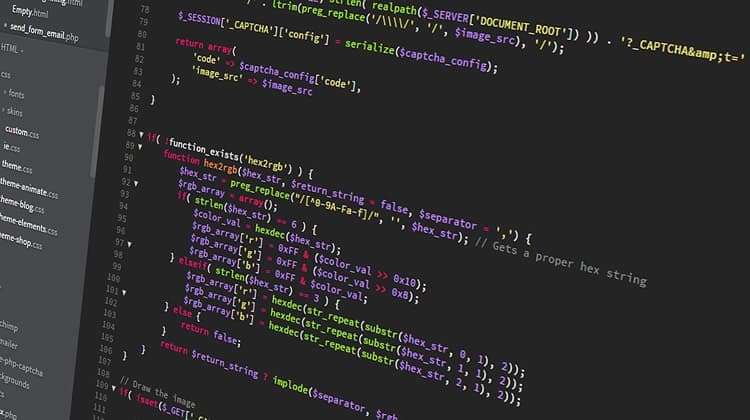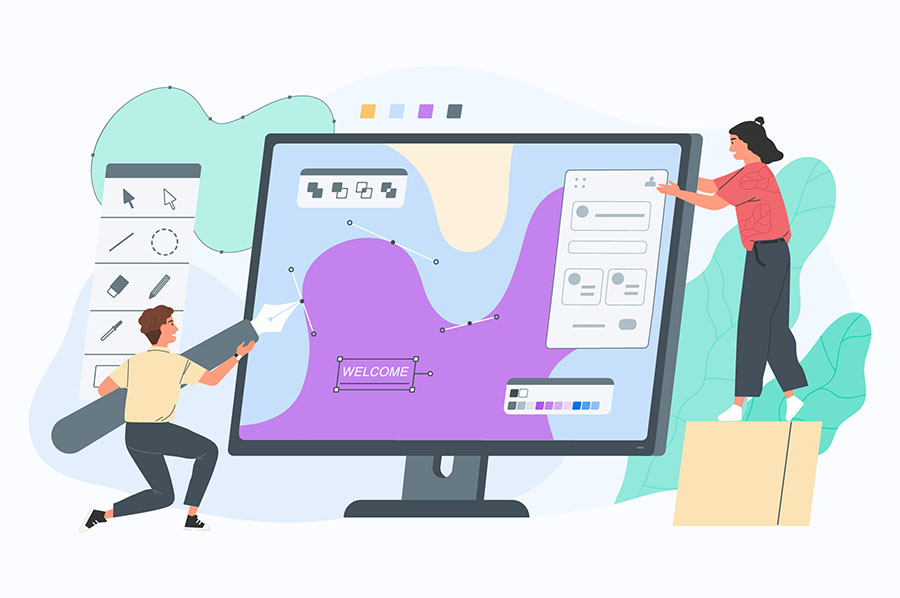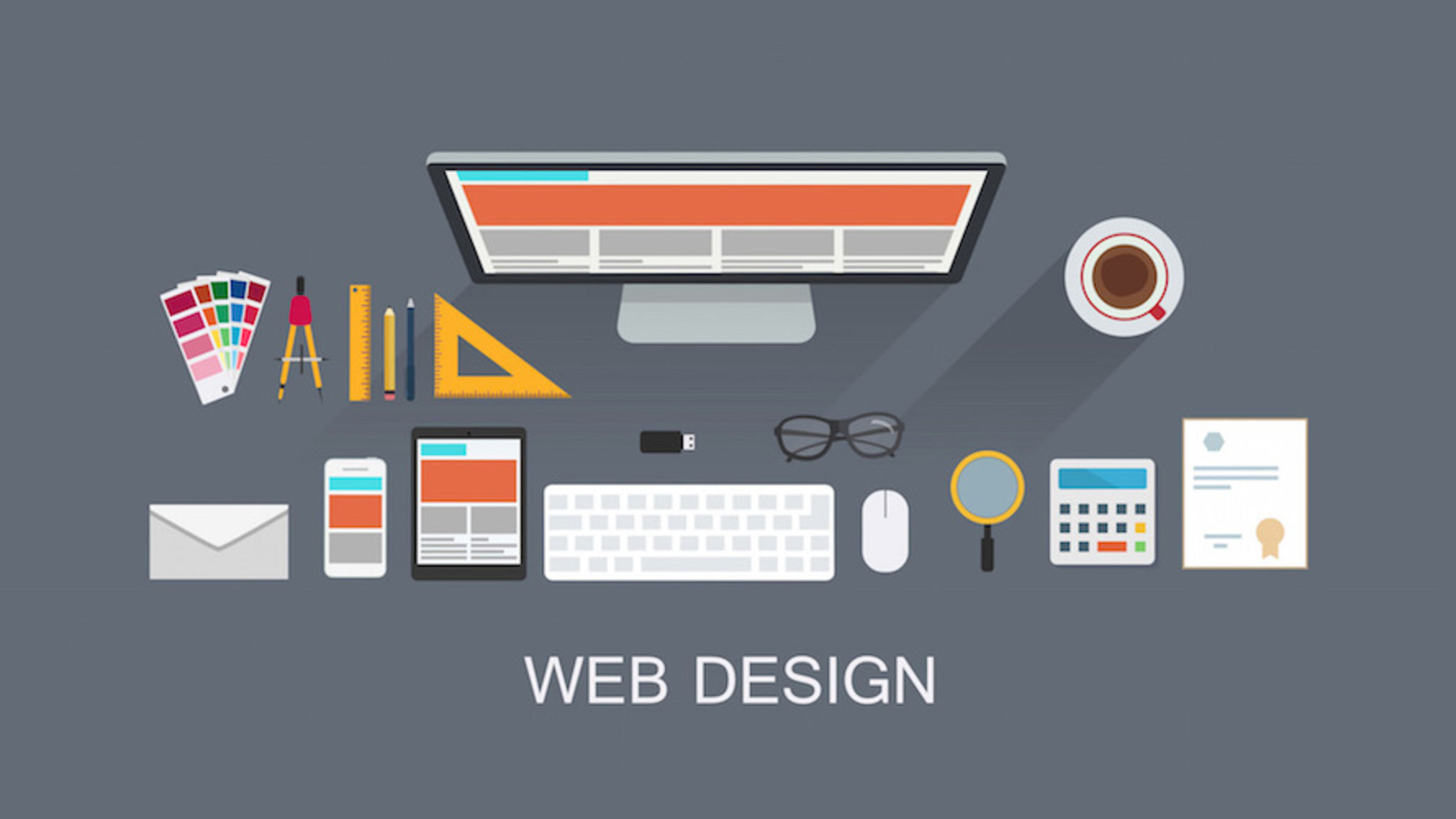All Categories
Featured
Table of Contents
- – 12 Essential Tips For Improving Your Web Desig...
- – 53 Web Design Tools To Help You Work Smarter ...
- – Custom Website Design And Marketing - Inmotio...
- – Ciw Web Design Series Tips and Tricks:
- – Why Is Web Design Important? - 6 Reasons To I...
- – What Is Web Design? A Comprehensive Guide - W...
- – Web Design Certificate - Web Development Cer...
- – Boxcar Studio - Wordpress & Drupal Web Desig...
- – Siteinspire - Web Design Inspiration Tips an...
- – Web Design Courses & Tutorials - Codecademy ...
- – Mrw Web Design - Wordpress Websites For Nonp...
12 Essential Tips For Improving Your Web Design In 2022 Tips and Tricks:
Quick summary Functionality and the energy, not the visual design, identify the success or failure of a site. Given that the visitor of the page is the only person who clicks the mouse and therefore chooses everything, user-centric design has developed as a standard approach for effective and profit-oriented website design - web design frederick md.
and the energy, not the visual style, identify the success or failure of a site. Given that the visitor of the page is the only person who clicks the mouse and therefore decides whatever, user-centric design has become a standard method for successful and profit-oriented website design. If users can't utilize a feature, it may as well not exist.
g. where the search box must be placed) as it has actually currently been performed in a variety of articles; instead we focus on the approaches which, used appropriately, can cause more advanced design choices and simplify the procedure of viewing provided info. Please notice that you may be interested in the usability-related articles we have actually published prior to: Concepts Of Good Website Design And Effective Website Design Standards, In order to utilize the concepts effectively we initially need to comprehend how users communicate with sites, how they think and what are the fundamental patterns of users' habits.
53 Web Design Tools To Help You Work Smarter In 2022 Tips and Tricks:
Visitors glance at each new page, scan some of the text, and click the first link that catches their interest or slightly resembles the important things they're trying to find. In fact, there are big parts of the page they do not even look at. Many users search for something interesting (or helpful) and clickable; as quickly as some promising prospects are found, users click.
If a page provides users with premium content, they are prepared to compromise the content with ads and the design of the site. This is the reason why not-that-well-designed websites with top quality material acquire a lot of traffic over years. Material is more vital than the design which supports it.

Users don't read, they scan. Notice how "hot" areas abrupt in the middle of sentences. This is typical for the scanning process. Extremely simple principle: If a site isn't able to meet users' expectations, then designer failed to get his task done correctly and the company loses cash. The higher is the cognitive load and the less intuitive is the navigation, the more ready are users to leave the website and look for alternatives.
Custom Website Design And Marketing - Inmotion Hosting Tips and Tricks:
Neither do they scan website in a direct style, going sequentially from one site section to another one. Rather users satisfice; they select the very first sensible choice. As soon as they find a link that appears like it may cause the objective, there is an excellent chance that it will be instantly clicked.
It doesn't matter to us if we understand how things work, as long as we can use them. If your audience is going to act like you're developing signboard, then style great billboards." Users wish to have the ability to control their web browser and count on the constant data discussion throughout the website.
If the navigation and website architecture aren't instinctive, the variety of enigma grows and makes it harder for users to understand how the system works and how to receive from point A to point B. A clear structure, moderate visual ideas and quickly identifiable links can assist users to discover their path to their objective.
Ciw Web Design Series Tips and Tricks:

Since users tend to explore websites according to the "F"-pattern, these three declarations would be the first elements users will see on the page once it is packed. The design itself is easy and intuitive, to understand what the page is about the user requires to browse for the answer.
When you've achieved this, you can communicate why the system is helpful and how users can benefit from it. Don't Squander Users' Perseverance, In every job when you are going to offer your visitors some service or tool, try to keep your user requirements minimal.
Novice visitors want to, not filling long web forms for an account they may never ever use in the future. Let users check out the site and find your services without requiring them into sharing personal information. It's not reasonable to force users to enter an email address to check the feature.
Why Is Web Design Important? - 6 Reasons To Invest In Site ... Tips and Tricks:
And that's what you desire your users to feel on your web site. The registration can be done in less than 30 seconds as the type has horizontal orientation, the user doesn't even require to scroll the page.
A user registration alone is adequate of an obstacle to user navigation to reduce inbound traffic. 3. Handle To Focus Users' Attention, As sites supply both fixed and dynamic content, some elements of the user interface draw in attention more than others do. Clearly, images are more attractive than the text just as the sentences marked as vibrant are more appealing than plain text.
Focusing users' attention to specific locations of the website with a moderate usage of visual aspects can help your visitors to receive from point A to point B without thinking about how it really is supposed to be done. The less concern marks visitors have, the they have and the more trust they can establish towards the company the website represents.
What Is Web Design? A Comprehensive Guide - Wix.com Tips and Tricks:
4. Make Every Effort For Feature Exposure, Modern web styles are typically slammed due to their method of guiding users with visually appealing 1-2-3-done-steps, large buttons with visual impacts etc. But from the design perspective these aspects in fact aren't a bad thing. On the contrary, such as they lead the visitors through the site material in a really easy and user-friendly method.
The site has 9 main navigation choices which show up at the first look. The choice of colors might be too light, though. is an essential principle of effective user interface design. It does not really matter how this is attained. What matters is that the content is well-understood and visitors feel comfortable with the way they communicate with the system.
Rather a cost: just what visitors are looking for. An optimal solution for effective writing is touse short and succinct expressions (come to the point as rapidly as possible), usage scannable layout (categorize the material, utilize several heading levels, use visual components and bulleted lists which break the flow of consistent text blocks), usage plain and unbiased language (a promo does not require to sound like advertisement; provide your users some affordable and unbiased reason why they should utilize your service or remain on your site)6.
Web Design Certificate - Web Development Certificate Program Tips and Tricks:
Users are seldom on a website to take pleasure in the style; in addition, for the most part they are looking for the info in spite of the style - web design frederick md. Aim for simplicity rather of intricacy. From the visitors' perspective, the finest site style is a pure text, without any ads or more material blocks matching precisely the inquiry visitors used or the content they have actually been trying to find.
Finch clearly presents the info about the website and provides visitors an option of choices without overcrowding them with unneeded material. 7. Do not Be Scared Of The White Area, Really it's really tough to overestimate the importance of white space. Not only does it help to for the visitors, but it makes it possible to perceive the details provided on the screen.
Complex structures are harder to check out, scan, analyze and deal with. If you have the choice between separating two style segments by a noticeable line or by some whitespace, it's typically better to utilize the whitespace service. (Simon's Law): the much better you handle to offer users with a sense of visual hierarchy, the simpler your material will be to view.
Boxcar Studio - Wordpress & Drupal Web Design ... - Ann Arbor Tips and Tricks:
The very same conventions and rules should be used to all elements.: do the most with the least quantity of cues and visual elements. 4 significant points to be considered: simplicity, clearness, diversity, and focus. Simplicity consists of just the aspects that are crucial for interaction. Clearness: all elements need to be designed so their significance is not ambiguous.
Conventions Are Our Friends, Conventional style of site components doesn't result in a dull web website. As they lower the learning curve, the need to figure out how things work. For example, it would be an use headache if all sites had different visual discussion of RSS-feeds. That's not that different from our routine life where we tend to get utilized to standard principles of how we organize information (folders) or do shopping (placement of items).
understand what they're getting out of a site navigation, text structure, search placement etc. A typical example from use sessions is to translate the page in Japanese (presuming your web users do not know Japanese, e. g. with Babelfish) and offer your use testers with a task to find something in the page of different language.
Siteinspire - Web Design Inspiration Tips and Tricks:
Steve Krug suggests that it's much better to, but take advantages of conventions when you don't. 10. Test Early, Test Typically, This so-called TETO-principle needs to be applied to every website design project as functionality tests typically provide into significant issues and concerns connected to an offered layout. Test not far too late, not too little and not for the wrong factors.
Some important indicate bear in mind: according to Steve Krug, and testing one user early in the project is much better than screening 50 near completion. Accoring to Boehm's first law, mistakes are most regular throughout requirements and style activities and are the more expensive the later they are gotten rid of.
That means that you design something, test it, repair it and then test it again. There might be problems which haven't been discovered throughout the very first round as users were practically obstructed by other issues.
Web Design Courses & Tutorials - Codecademy Tips and Tricks:

This holds for designers also. After you've worked on a website for couple of weeks, you can't observe it from a fresh viewpoint any longer. You know how it is built and therefore you know exactly how it works you have the wisdom independent testers and visitors of your website would not have.
It can be linked to other locations such as graphic design, user experience, and multimedia arts, however is more aptly seen from a technological standpoint. It has actually ended up being a large part of people's daily lives. It is tough to picture the Web without animated graphics, various styles of typography, background, videos and music.

During 1991 to 1993 the Internet was born. Text-only pages could be seen utilizing a basic line-mode internet browser. In 1993 Marc Andreessen and Eric Bina, created the Mosaic web browser. At the time there were multiple browsers, nevertheless most of them were Unix-based and naturally text heavy. There had actually been no integrated technique to graphic design elements such as images or noises.
Mrw Web Design - Wordpress Websites For Nonprofits ... Tips and Tricks:
The W3C was created in October 1994 to "lead the Web to its complete capacity by establishing typical procedures that promote its evolution and ensure its interoperability." This prevented any one business from monopolizing a propriety web browser and programs language, which might have altered the effect of the World Wide Web as a whole.
As this has actually occurred the innovation of the web has actually likewise moved on. There have actually likewise been substantial changes in the way people utilize and access the web, and this has altered how sites are designed.
Learn more about Lovell Media Group LLC or TrainACETable of Contents
- – 12 Essential Tips For Improving Your Web Desig...
- – 53 Web Design Tools To Help You Work Smarter ...
- – Custom Website Design And Marketing - Inmotio...
- – Ciw Web Design Series Tips and Tricks:
- – Why Is Web Design Important? - 6 Reasons To I...
- – What Is Web Design? A Comprehensive Guide - W...
- – Web Design Certificate - Web Development Cer...
- – Boxcar Studio - Wordpress & Drupal Web Desig...
- – Siteinspire - Web Design Inspiration Tips an...
- – Web Design Courses & Tutorials - Codecademy ...
- – Mrw Web Design - Wordpress Websites For Nonp...
Latest Posts
Custom Web Design, Development & Digital Marketing ... Tips and Tricks:
Custom Website Design And Marketing - Inmotion Hosting Tips and Tricks:
Awwwards - Website Awards - Best Web Design Trends Tips and Tricks:
More
Latest Posts
Custom Web Design, Development & Digital Marketing ... Tips and Tricks:
Custom Website Design And Marketing - Inmotion Hosting Tips and Tricks:
Awwwards - Website Awards - Best Web Design Trends Tips and Tricks: